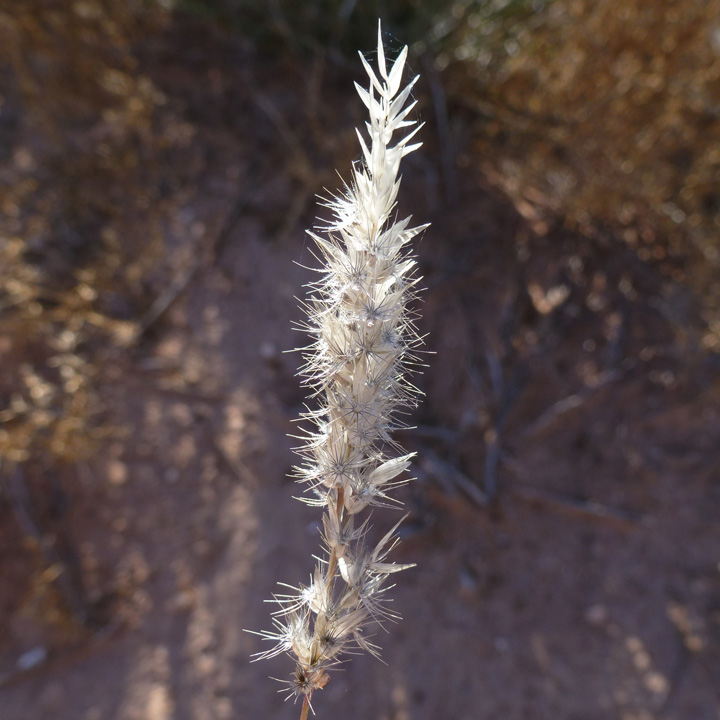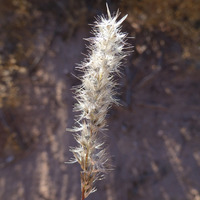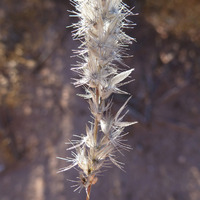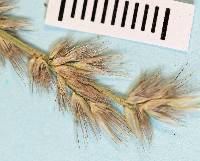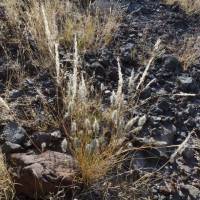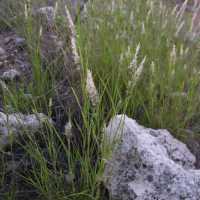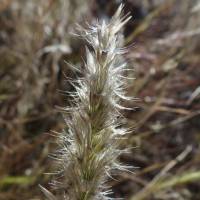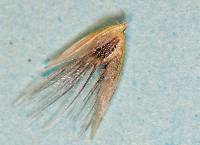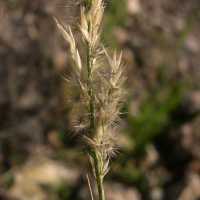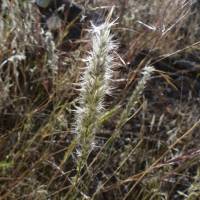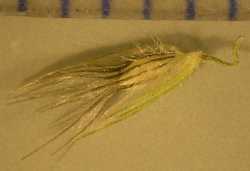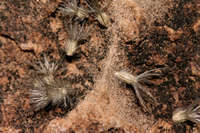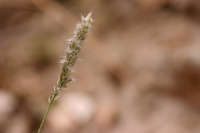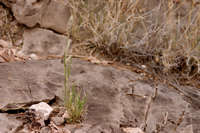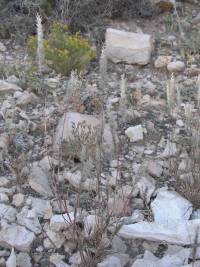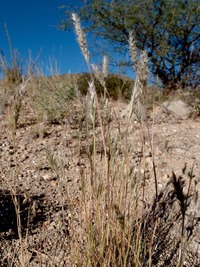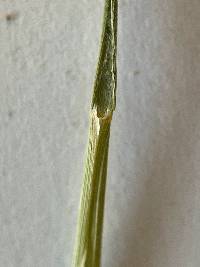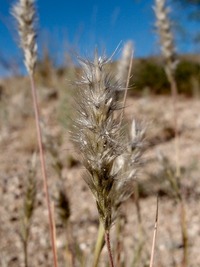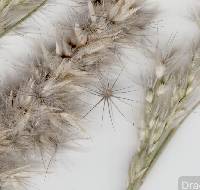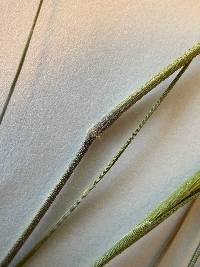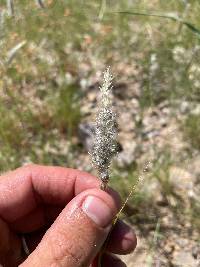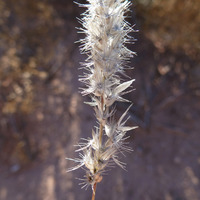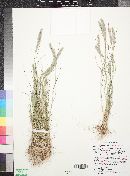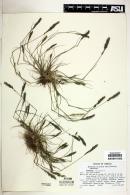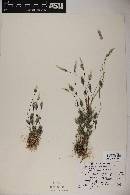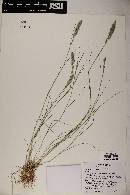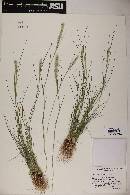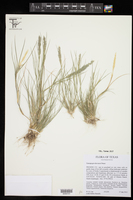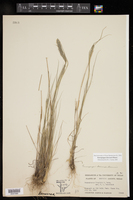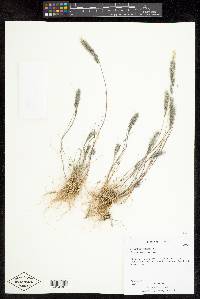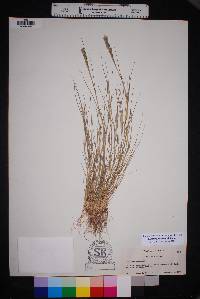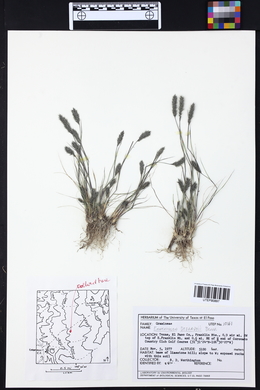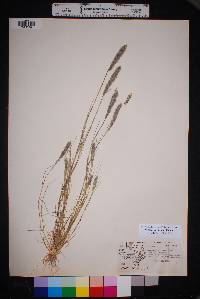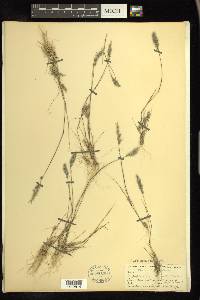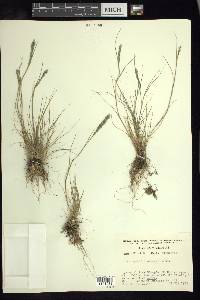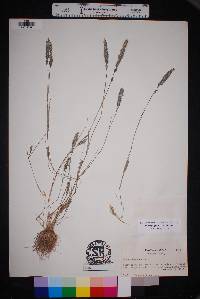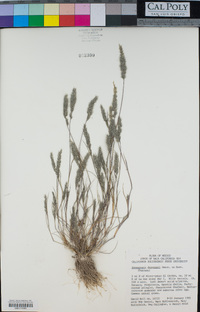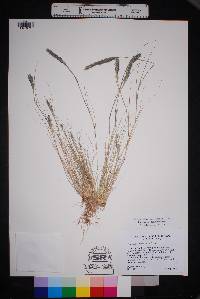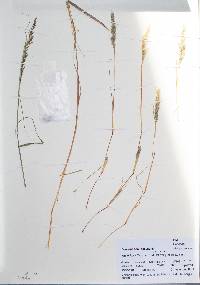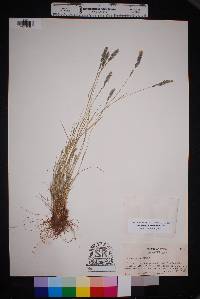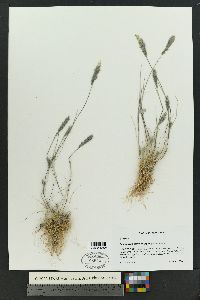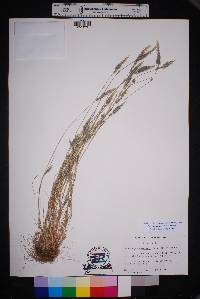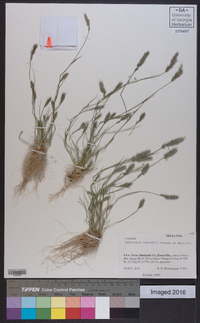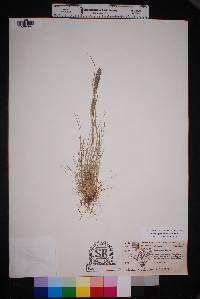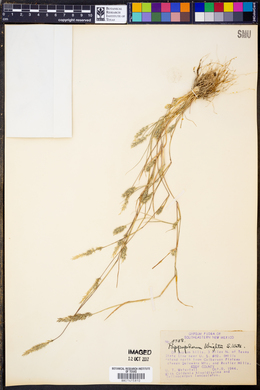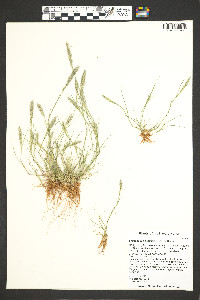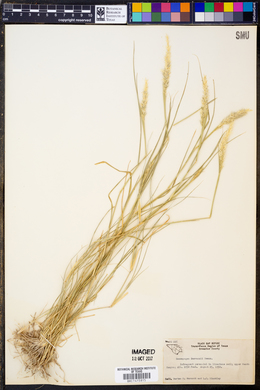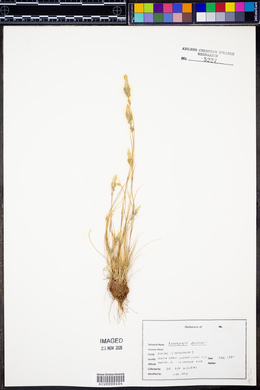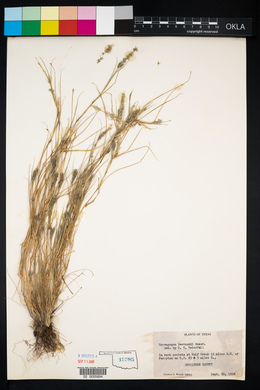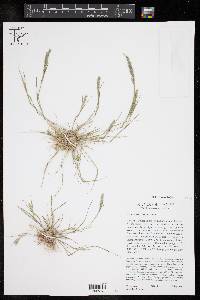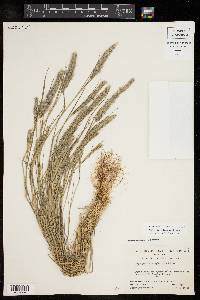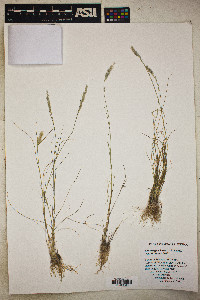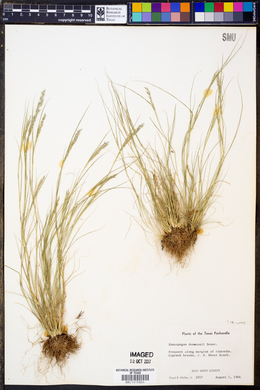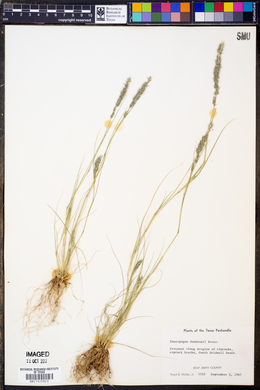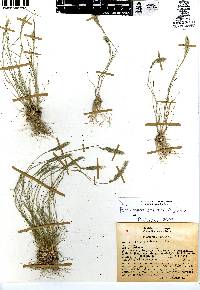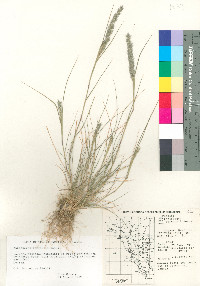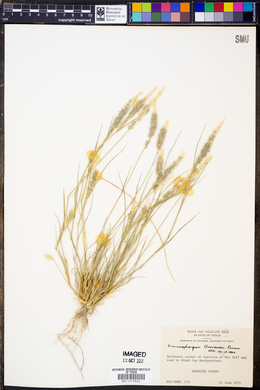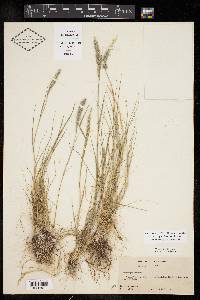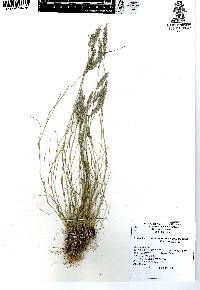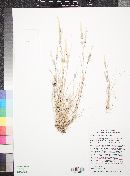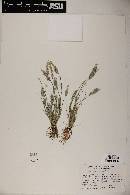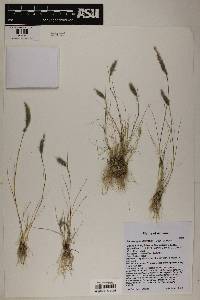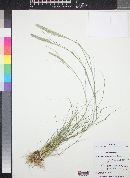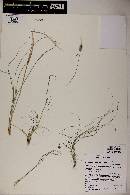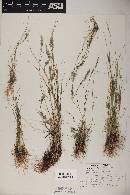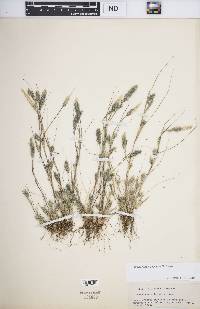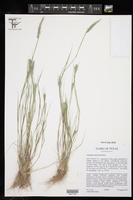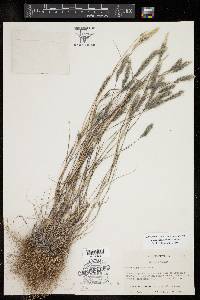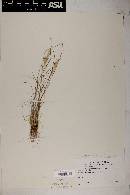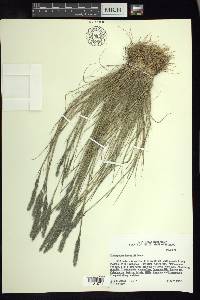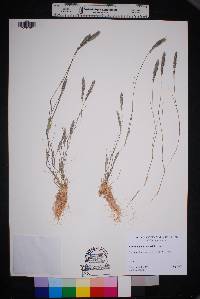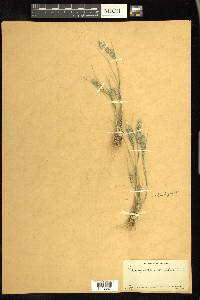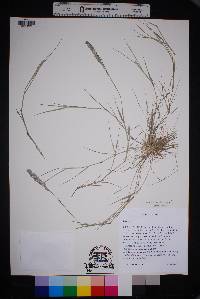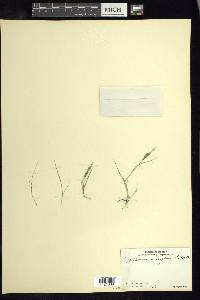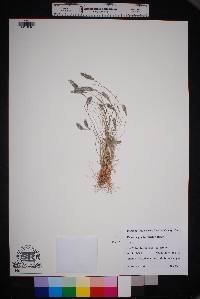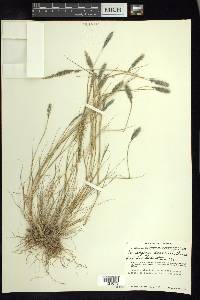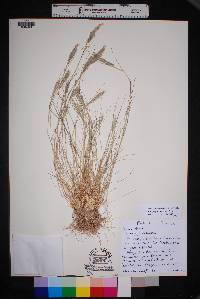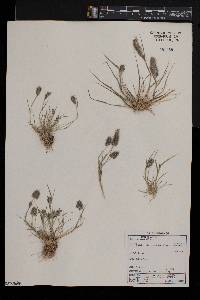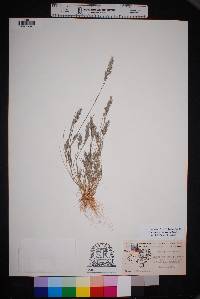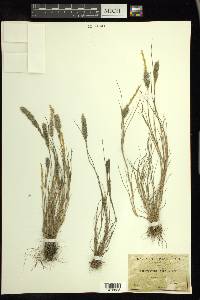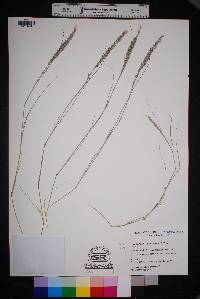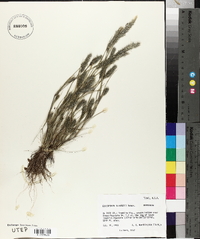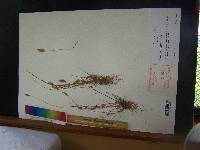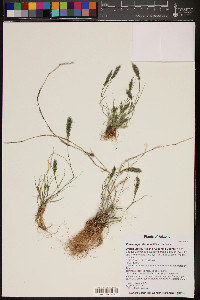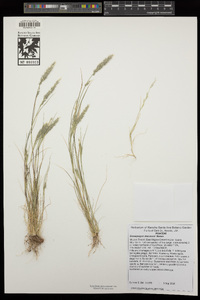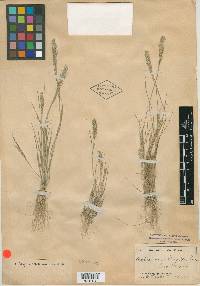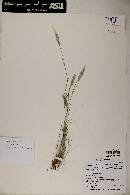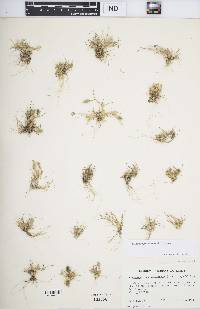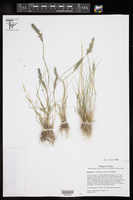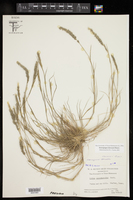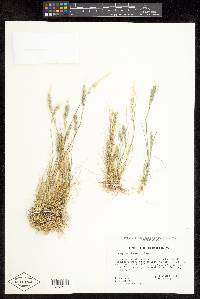
|
|
|
|
Family: Poaceae
Nine-Awn Grass, more...nineawn pappusgrass, spike pappus grass, feather pappusgrass, spike pappusgrass (es: zacate lobero, zacate ladera)
[Enneapogon borealis (Griseb.) Honda, moreEnneapogon lophotrichus Chiov. ex Chiarugi, Enneapogon phleioides Roem. & Schult., Enneapogon pusillus Rendle, Enneapogon wrightii (S. Watson) C.E. Hubb., Pappophorum boreale C.C. Gmel. ex B. Fedtsch., Pappophorum brachystachyum Jaub. & Spach, Pappophorum fasciculatum Chiov., Pappophorum figarianum Fig. & De Not., Pappophorum jaminianum Coss. & T. Durand & Boiss., Pappophorum mexicanum Griseb. ex E. Fourn., Pappophorum nanum Steud., Pappophorum phleoides Turcz., Pappophorum pusillum (Rendle) K. Schum., Pappophorum senegalense Steud., Pappophorum vincentianum J.A. Schmidt, Pappophorum vincentinum J.A. Schmidt, Pappophorum wrightii S. Wats.] |
Plants perennial. Culms 20-45 cm, about 1 mm thick, ascending to erect from a hard knotty base, often branching; nodes pubescent. Sheaths usually shorter than the internodes, more or less pubescent; ligules about 0.5 mm; blades mostly 2-12 cm long, 1-2 mm wide, more or less hairy, soon involute. Panicles 2-10 cm, spikelike, grayish-green or lead-colored. Spikelets mostly 5-7 mm, usually only the lowest floret bisexual. Glumes subequal, 3-5 mm, thin, puberulent; upper glumes often 3- or 4-veined; lowest lemmas 1.5-2 mm, firm, rounded on the back; awns 3-4 mm; anthers 0.3-0.5 mm. Caryopses 1-1.2 mm, oval, plump; embryos subequal to the caryopses. Cleistogamous spikelets commonly present in the lower sheaths, their lemmas larger than those of the florets in the aerial panicles, unawned or with awns that are much reduced. 2n = 20. Enneapogon desvauxii grows in open areas of the southwestern United States and in much of Mexico. It also grows in Peru, Bolivia, Argentina, and most of Africa, from which it extends eastward through Arabia and India to China. Dr. David Bogler, USDA NRCS PLANTS Database Perennials, Terrestrial, not aquatic, Basal sheaths fibrous, old leaves persistent at base of plant, Stems nodes swollen or brittle, Stems erect or ascending, Stems geniculate, decumbent, or lax, sometimes rooting at nodes, Stems caespitose, tufted, or clustered, Stems terete, round in cross section, or polygonal, Stems branching above base or distally at nodes, Stem nodes bearded or hairy, Stem internodes hollow, Stems with inflorescence less than 1 m tall, Stems, culms, or scapes exceeding basal leaves, Leaves mostly basal, below middle of stem, Leaves mostly cauline, Leaves conspicuously 2-ranked, distichous, Leaves sheathing at base, Leaf sheath mostly open, or loose, Leaf sheath hairy, hispid or prickly, Leaf sheath and blade differentiated, Leaf blades linear, Leaf blades very narrow or filiform, less than 2 mm wide, Leaf blade margins folded, involute, or conduplicate, Leaf blades more or less hairy, Ligule present, Ligule a fringe of hairs, Inflorescence terminal, Inflorescence a dense slender spike-like panicle or raceme, branches contracted, Inflorescence solitary, with 1 spike, fascicle, glomerule, head, or cluster per stem or culm, Flowers bisexual, Spikelets pedicellate, Spikelets laterally compressed, Spikelet less than 3 mm wide, Spikelets with 1 fertile floret, Spikelets solitary at rachis nodes, Spikelets all alike and fertille, Spikelets bisexual, Spikelets disarticulating above the glumes, glumes persistent, Spikelets disarticulating beneath or between the florets, Rachilla or pedicel glabrous, Glumes present, empty bracts, Glumes 2 clearly present, Glumes equal or subequal, Glumes equal to or longer than adjacent lemma, Glumes 3 nerved, Glumes 4-7 nerved, Glumes 8-15 nerved, Lemmas thin, chartaceous, hyaline, cartilaginous, or membranous, Lemma 8-15 nerved, Lemma body or surface hairy, Lemma apex dentate, 3-5 fid, Lemma distinctly awned, more than 2-3 mm, Lemma with 7-15 awns, Lemma awns about equal in length, Lemma awn less than 1 cm long, Lemma awns straight or curved to base, Lemma margins thin, lying flat, Lemma straight, Lemma surface pilose, setose or bristly, Palea present, well developed, Palea membranous, hyaline, Palea longer than lemma, Palea 2 nerved or 2 keeled, Stamens 3, Styles 2-fid, deeply 2-branched, Stigmas 2, Fruit - caryopsis, Caryopsis ellipsoid, longitudinally grooved, hilum long-linear.
FNA 2003, Gould 1980 Common Name: nineawn pappusgrass Duration: Perennial Nativity: Native Lifeform: Graminoid General: Low tufted perennial, stems 1 mm thick, 20-45 cm tall, ascending to erect from a hard knotty base; nodes densely pubescent. Vegetative: Sheaths open, usually shorter than internodes, more or less pubescent; collar pubescent; ligules about 0.5 mm, ciliate, truncate, with membranous base; blades 2-12 cm long, 1-2 mm wide, more or less hairy, involute. Inflorescence: Panicles 2-10 cm, spikelike, grayish-green to lead-colored; spikelets 5-7 mm, usually only the lowest floret bisexual; glumes subequal, 3-5 mm, thin, puberulent; lowest lemmas 2 mm, firm, rounded on back, with nine subequal, plumose awns 3-4 mm. Ecology: Found on dry rocky slopes, mesas, rock outcrops and cliffs below 6,000 ft (1829 m); flowers in summer and fall. Distribution: se CA, s UT, AZ, NM, CO south through w TX; south through Mexico; also in S. America and S. Africa. Notes: Distinguished by being a relatively small perennial (20-40 cm) with thin stems, knotty bases and a spike-like inflorescence of hairy spikelets, each with one plump, rounded seed surrounded by a lemma with nine feathery awns spreading off the top (see pics). The hairy spikelets can give a silvery appearance to the inflorescence. The invasive E. cenchroides is taller (50-100 cm) and has an inflorescence 3 cm wide at maturity. At the northern/ higher elevation edge of its range, such as Marble Canyon rim in n AZ, E. desvauxii can grow as an annual. In these environments, it can superficially resemble Schismus arabicus when dried out. It is necessary to examine the spikelets and look for the 9-awned lemmas to confirm ID. Ethnobotany: Unknown Etymology: Enneapogon is from the Greek ennea, nine and pogon, a beard, referring to the nine plumose awns on each lemma; desvauxii is named for Augustine Nicaise Desvaux (1784-1856) a French professor of botany. Synonyms: Pappophorum wrightii Editor: SBuckley 2010, FSCoburn 2014, AHazelton 2015 |
|
|
|

